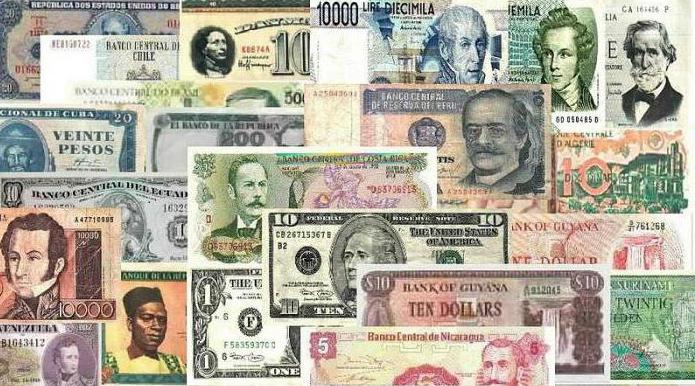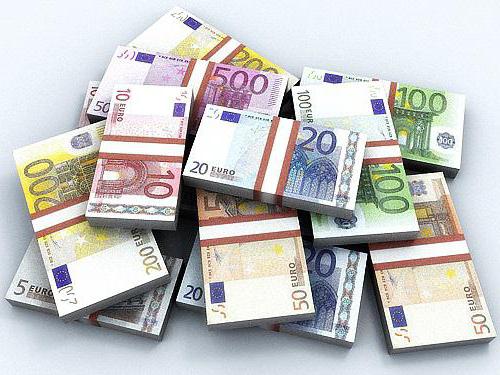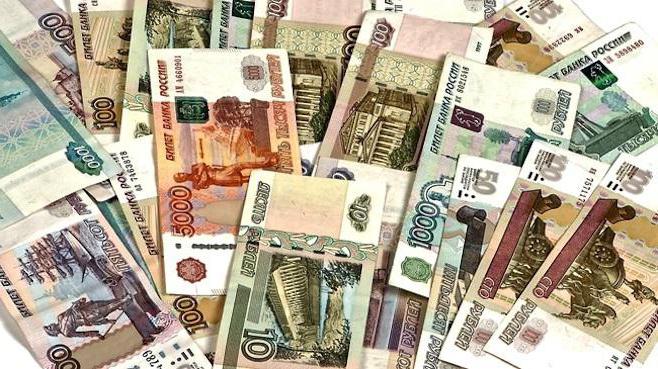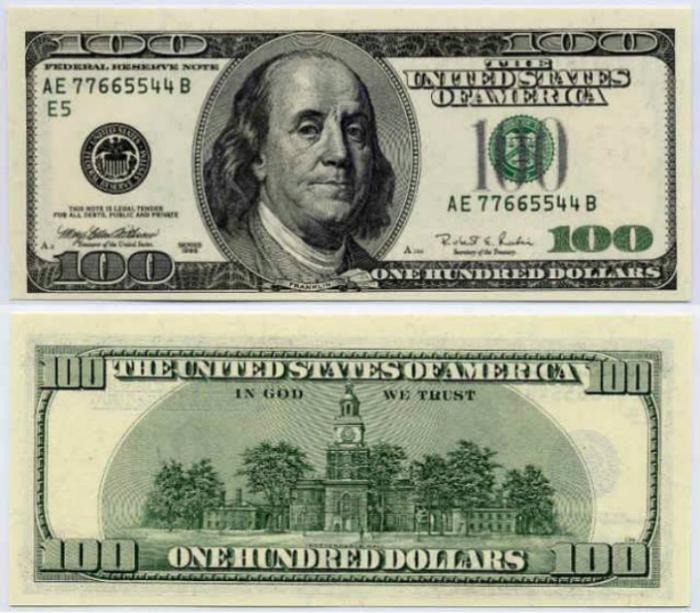All monetary units have two sides - it doesn’t matter if it is a paper note or a simple coin. It is quite difficult for a simple layman to recognize where the front side of the bill is. And although this is not necessary to know when buying goods in stores and other places, for many people this issue is of serious importance.
Banknote face

Obverse is the face of all notes and coins. Its name comes from the French "avers" or from the Latin "adversus", which translates as "facing face." Today in the world there is no consensus on how to recognize it. Each state is characterized by its own design of the front side of the bill, but, basically, they focus on historical values or country symbols.
And although, we repeat, in world practice there is no single point of view about what the front side of the bill should be, nevertheless, there are some general rules for determining it. Most often on the obverse is depicted:
- a portrait of a state leader, both current and former;
- the state emblem, while it can be depicted on both sides of the bill - in this case, the obverse is determined by the rank of the symbol depicted or size;
- historical or legendary images that display the name of the country or its geographical territory;
- name of the bank that issues these banknotes.
Alternative Obverse Images
In rare cases, it also happens that none of the above items are used on bills. If you have come across this type of banknote, then its face can be determined by the serial number, which is usually shown on the obverse.
When it is very difficult to determine the front part, you can look for explanations in the catalog of the issuing country. But this recommendation is more suitable for coins, because because of the small size it is impossible to place all the decals on them.
New bills

Banknotes of Russian production, as well as monetary units of other countries of the world, also have distinctive features of obverse, but their front side underwent many changes. Throughout the history of the country, up to the emergence of the post-Soviet space, portraits of tsars, or, after the revolution, the great leader of the proletariat V.I. Lenin were depicted on it.
After the collapse of the Soviet Union in 1991, it was decided to thoroughly change the obverse of the currency. Since then, new bills were issued with the image of the Kremlin on the front side. This was done so as to continue not to be dependent on political figures and their decisions, but to leave only drawings of cities and historical monuments that are always relevant. 
A denomination of 1 thousand rubles
The front side of the 1000 rubles bill has undergone a number of changes in recent years. In 1993, it depicted the state flag hoisted on the Senate Tower, but after 2 years it was re-released again. On the updated banknote flaunts the top of the rostral column in the form of the ship Manjur. Thus, the creators perpetuated the historically valuable landmark of Vladivostok.
The second image on the front side was dedicated to the port of this city, which is located in a bay called the Golden Horn. This type of banknote existed until 2001, after which the obverse of the new banknote depicted the memorial of Prince Yaroslav the Wise, erected in Yaroslavl. And for the second image, the chapel of Our Lady of Kazan, known throughout the post-Soviet space, was drawn, painted against the backdrop of the Yaroslavl Kremlin.
And although the banknote has been re-issued in order to improve protection twice already since 2001, it still has such a front side of banknotes.

Dollar bills
Basically, all the banknotes of Europe and Asia comply with the accepted rules, and it is quite easy to find obverse on them. The same applies to the image on dollar bills. On their front side there is a seal of the Ministry of Finance and the issuing bank, as well as a portrait of one of the American presidents.
In addition, banknotes issued in the USA contain:
- on the obverse - the year of manufacture and two prints of the serial number, as well as the bank code displayed in both letters and numbers. In addition, special control letters are indicated in the corners;
- on the back there is an image of state monuments and institutions. The most important symbol on this part of the bill is the inscription "In God we trust", which means "we believe in God";
- special offset background images;
- cliche digital codes on both the back and the front.
Currency authenticity
It is the responsibility of each country that produces its own currency to protect its authenticity, as well as to determine severe penalties for counterfeiters.
Mostly on banknotes issued by official issuing banks, the decals are depicted on the entire surface on both sides, but in some cases the bulk of them are located on the obverse. In addition, once a few years, banknotes are re-issued in order to increase the level of security and remove worn-out banknotes from circulation.
The main visible security signs on banknotes:
- A special part of the note with a moire pattern. It has the ability to change color and contains pronounced rainbow stripes.
- Hidden image or, in other words, kipp effect. Such a pattern can be seen only by looking at the banknote at an acute angle.
- Tags that can be seen under infrared light.
- Embossed lettering, perfect for visually impaired people.
- Microperforation. It, like the previous sign of authenticity, is intended for people with poor eyesight;
- Banknote serial number.

There is protection on the back of the bill. There may be special watermarks, microscopic text, magnetic marks, and much more.
Monetary units improper replacements in the bank
It is worth noting that even in the case of authenticity of a banknote, it can be withdrawn without compensation for damage. Banks can do this based on laws and calling the following reasons:
- frayed beyond recognition and very dilapidated;
- denominated notes - after the expiration of the exchange time;
- banknotes that have been damaged by mechanical, chemical or thermal effects, if the whole area is less than 55% of the total size of the banknote;
- if the monetary unit has lost its number or face value, as well as the security thread, portrait has been severely damaged;
- in addition, if the bill was glued from several parts, it is important that one of them be at least 55%.
The front side of the banknote in each currency is unique, and all countries are trying to introduce some aspects of their history into its appearance. And, of course, one of the main tasks of any state issuing its banknotes is to protect them from fakes. Incidentally, in some countries the penalties for counterfeiting monetary units are particularly severe and even reach the death penalty.

